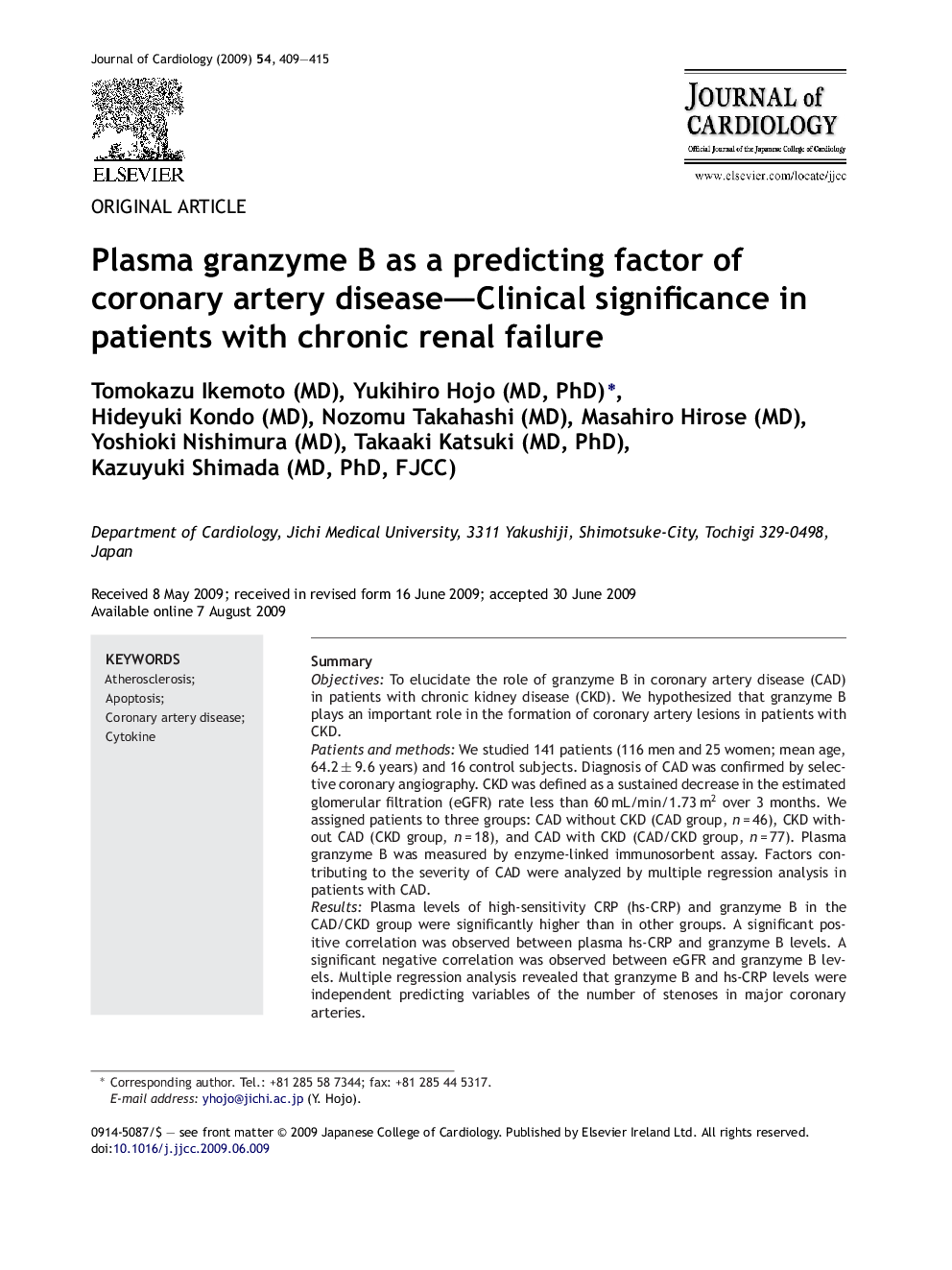| Article ID | Journal | Published Year | Pages | File Type |
|---|---|---|---|---|
| 2963538 | Journal of Cardiology | 2009 | 7 Pages |
SummaryObjectivesTo elucidate the role of granzyme B in coronary artery disease (CAD) in patients with chronic kidney disease (CKD). We hypothesized that granzyme B plays an important role in the formation of coronary artery lesions in patients with CKD.Patients and methodsWe studied 141 patients (116 men and 25 women; mean age, 64.2 ± 9.6 years) and 16 control subjects. Diagnosis of CAD was confirmed by selective coronary angiography. CKD was defined as a sustained decrease in the estimated glomerular filtration (eGFR) rate less than 60 mL/min/1.73 m2 over 3 months. We assigned patients to three groups: CAD without CKD (CAD group, n = 46), CKD without CAD (CKD group, n = 18), and CAD with CKD (CAD/CKD group, n = 77). Plasma granzyme B was measured by enzyme-linked immunosorbent assay. Factors contributing to the severity of CAD were analyzed by multiple regression analysis in patients with CAD.ResultsPlasma levels of high-sensitivity CRP (hs-CRP) and granzyme B in the CAD/CKD group were significantly higher than in other groups. A significant positive correlation was observed between plasma hs-CRP and granzyme B levels. A significant negative correlation was observed between eGFR and granzyme B levels. Multiple regression analysis revealed that granzyme B and hs-CRP levels were independent predicting variables of the number of stenoses in major coronary arteries.ConclusionsThese results indicate that granzyme B might be a novel risk factor for the formation of coronary atherosclerosis by inducing apoptosis of vascular tissues in patients with CKD.
